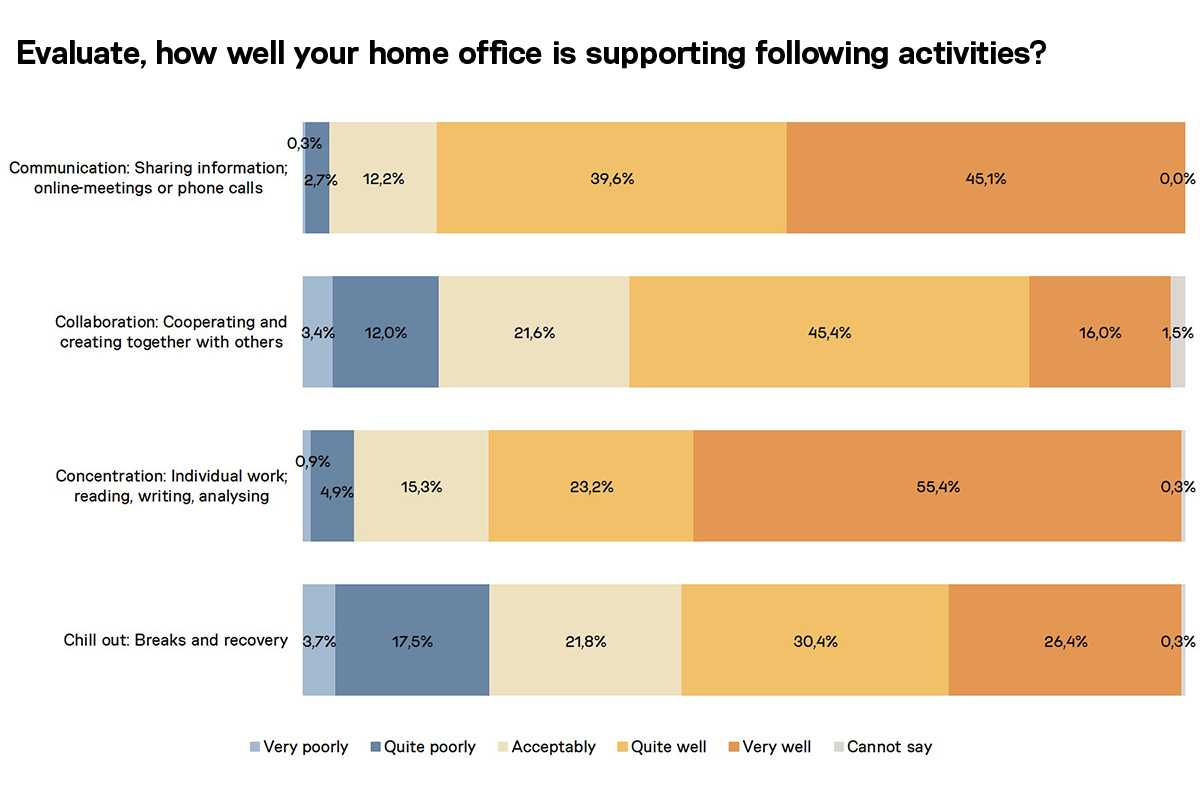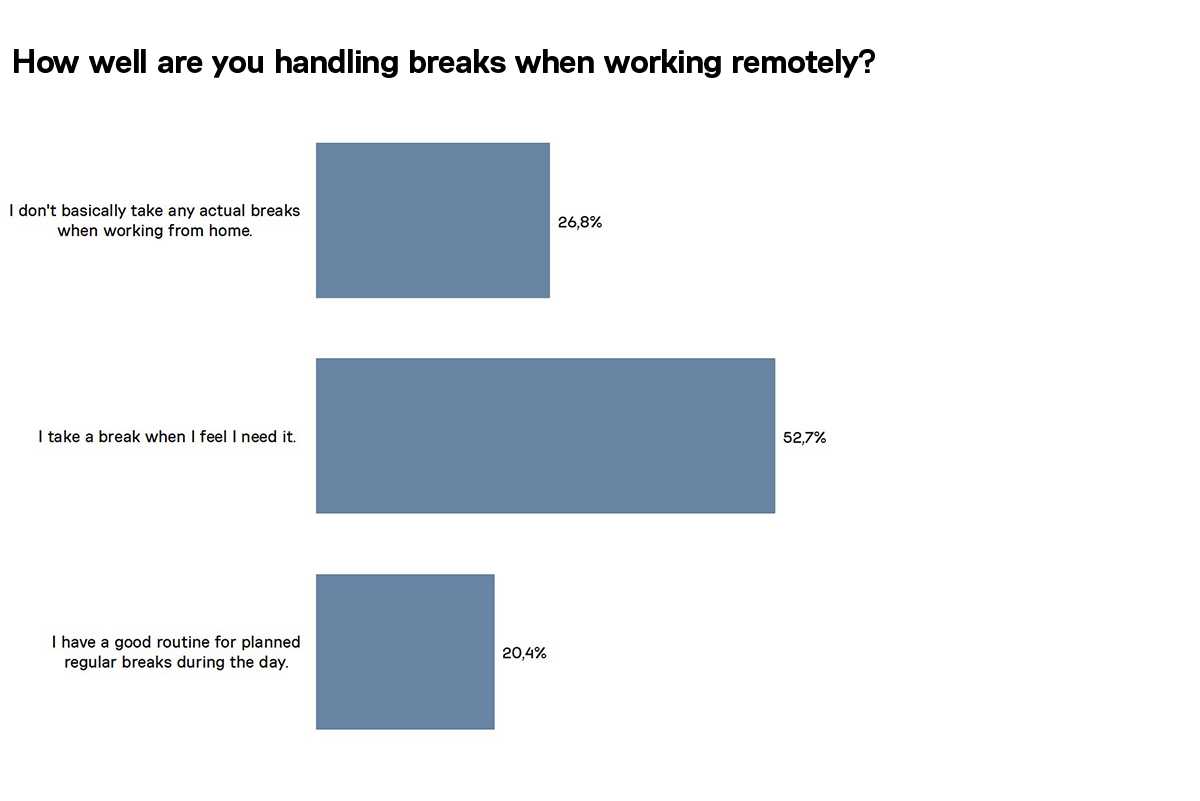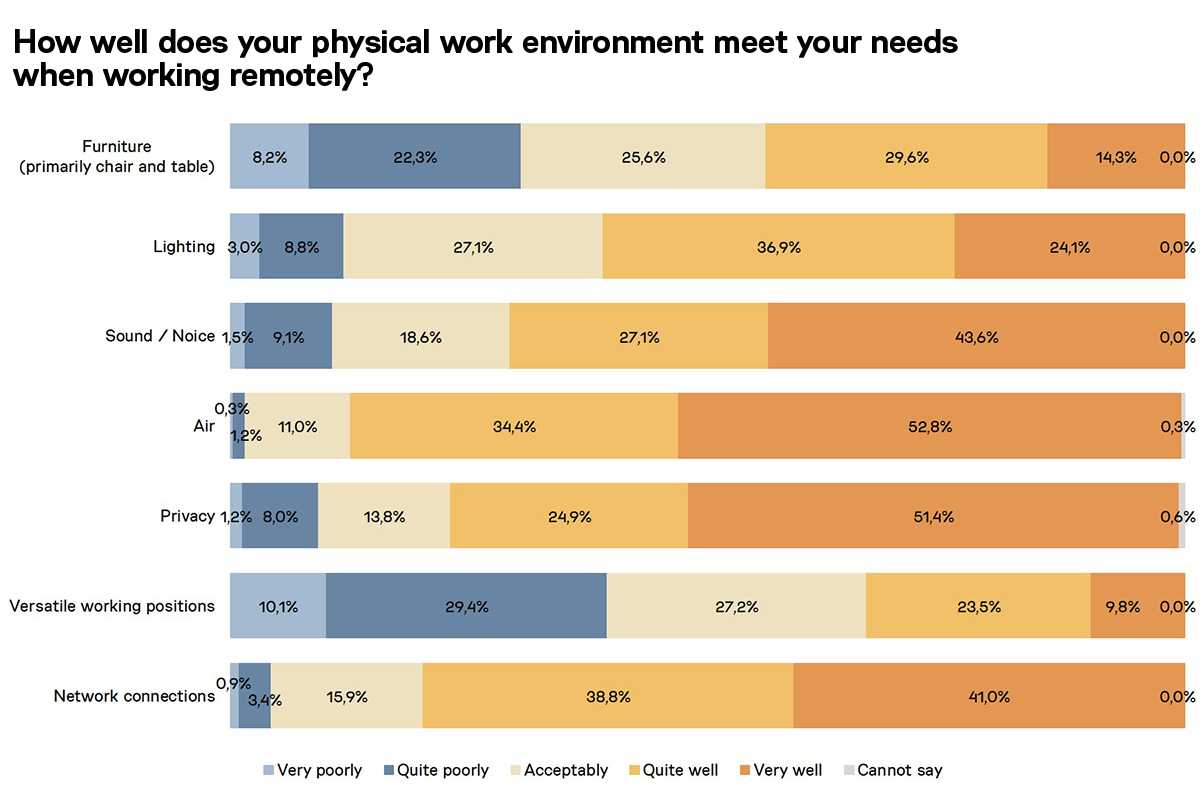A peek into the experiences of teleworkers
As a workplace specialist, we want to gain a better understanding of how people are experiencing their sudden transition to teleworking. Martela Remote Work Insights 2020 survey was being conducted online and within a week more than 300 people in Finland, Sweden and Norway had responded. Attached is the first batch of results.
How successfully can you carry out various work tasks at home?
Do we actually need offices anymore, considering how well working from home seems to be going?
Teleworking has previously been a way of getting time and space for concentration, and this is currently reflected in a clear increase in efficiency among those who are working remotely: "No one interrupts my work by coming up to my desk, there is no need to be present all the time and it is easier to concentrate.”
The home office is also surprisingly well-suited for other work tasks. Thanks to teleconferencing applications, which have become mainstream in recent years, over 85% of respondents feel that information sharing, and communication are going well. It is obviously more difficult to carry out deeper cooperation now, but over 60% of the respondents feel they are doing well also in this area. “It is easy to talk to and ask colleagues questions at the office, but this is not possible now,” says one respondent describing the situation.

From our earlier Martela Insights surveys, we know that recovery and relaxation is also difficult at normal offices, but perhaps now at last we can finally stop worrying that employees are just lazing around when they are working from home. A quarter don’t take any breaks at all, which means that people get really immersed in their work. One respondent writes: "The challenge with teleworking is that it is easy to just carry on working all day, which includes eating by the computer." No less time is spent on doing work either – on the contrary: "Work and leisure time get mixed up as work is interspersed with breaks and continues until late at night."
Fortunately, three out of four take breaks, and many also feel they have more useful hours in the day now they are working from home and there is no need to spend time commuting and getting ready. “You save petrol, you can dress casually and wash your hair less often, and in Skype meetings you only need to be dressed properly on your top half,” one respondent sums up.

Physical working conditions at home
Regular problems familiar from open-plan offices, such as poor ventilation, poor lighting, noise, and a lack of privacy, are not experienced by people who work from home. The cornerstone of teleworking, i.e. data communications connections, also work well for more than 80% of respondents.
The most obvious shortcomings are in the ergonomics of home offices. Less than half of the respondents (44%) feel that their furniture serves remote work at least quite well, and only a third can vary their work positions.
“I don’t have a proper workstation, and my dining table is now my desk. I can never seem to get away from my work as my work papers are all over the dining area.”
Even if you do have a decent workstation at home, there are often several users: “I have a large workstation, but my husband also sits at the same table. He has connected our screens to his own device, and holds his own meetings there, and I have my meetings here on the sofa in the living room.”

Further information
Eeva Terävä, Head of Workplace Development, Martela
eeva.terava@martela.com, +358 50 412 3546